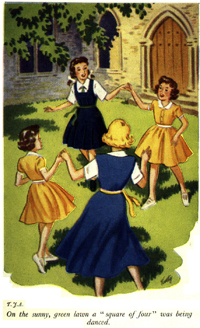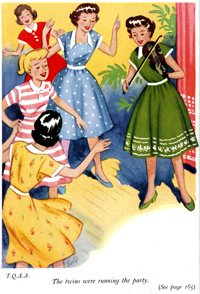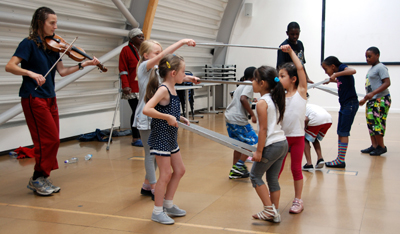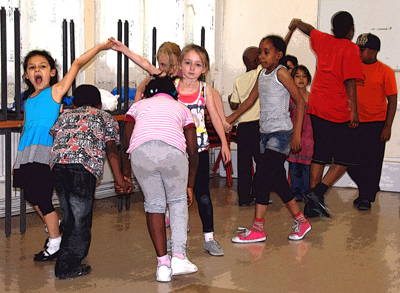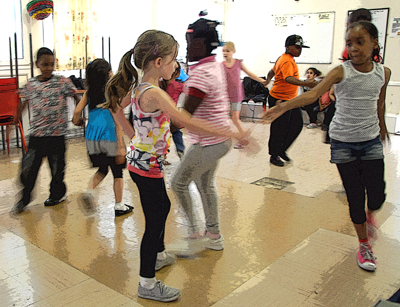|
It is not clear when Daisy Caroline Daking stopped teaching at the Y.M.C.A., but her death during the Second World War marked the end of an era. However, the Canning Town and Plaistow folk dancing tradition continued long after her death. Local resident Jim Ludlam recalls taking part in folk dancing in the 1950s.
Perhaps Cecil Sharp’s greatest achievement in ensuring the longevity of the folk dance movement was to make folk dancing part of the state school curriculum. One of Elsie Oxenham’s teenage characters, discovering the Society for the first time while taking business studies at technical college, recalls that:
As Oxenham makes clear in her books, putting folk on the curriculum led to many teachers attending classes in order to pass the Society’s examinations, and therefore to earn a higher salary. In her persona of ‘the Writing Person’, Oxenham explains: “To so many of them it’s just an extra teaching stunt, and an extra certificate that will be valuable, and [the staff] are merely useful because they can help them to pass the exams.” (The Abbey Girls Again, 1924). However, this still meant that children continued to learn folk dancing in school long after its popularity had faded elsewhere. ***
After the Second World War, folk dancing continued to be part of the school curriculum, and was also a popular activity with the Girl Guides. Canning Town residents remember:
Not all teachers were enthusiastic. Another resident recalls: “I remember the teacher just sitting looking out the window whilst the tape played and told us what to do – that was my first experience of folk dancing.”
Today, contemporary dance organization East London Dance is running a new programme of folk dancing classes, workshops and holiday schools in Canning Town, bringing together the different English folk dancing forms (Country, Morris, Sword and Clog) with Jamaican dance hall and European folk dances. As Elsie Oxenham put it: “Your real East-Ender dances harder—and almost better—than any one else.” Canning Town’s folk dance tradition lives on in the 21st century.
All of the images above are copyrighted and must not be reproduced without permission. Text © Ju Gosling aka ju90 2010
|


